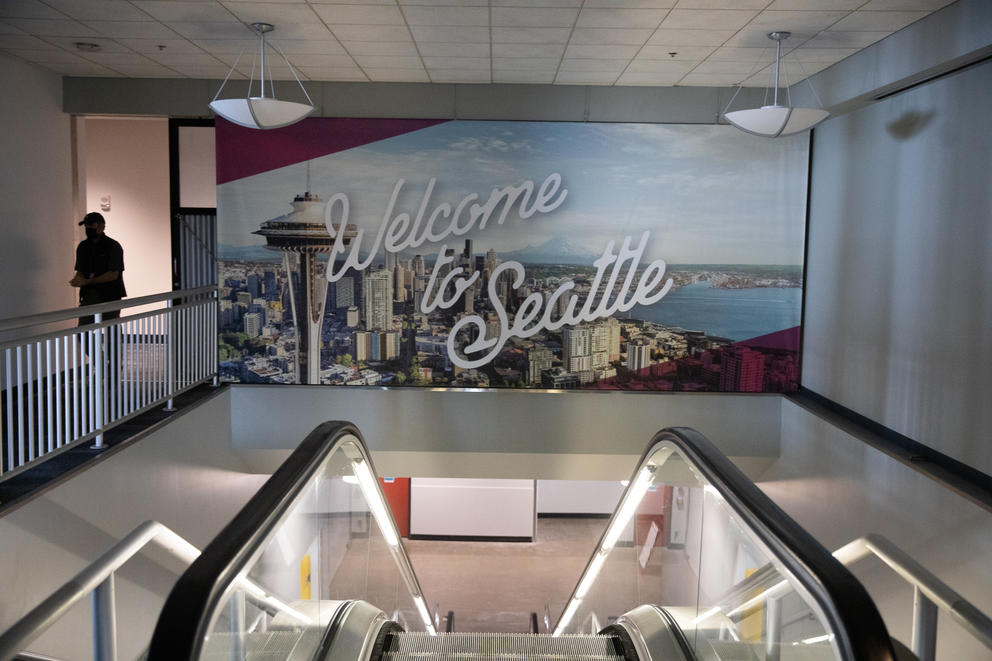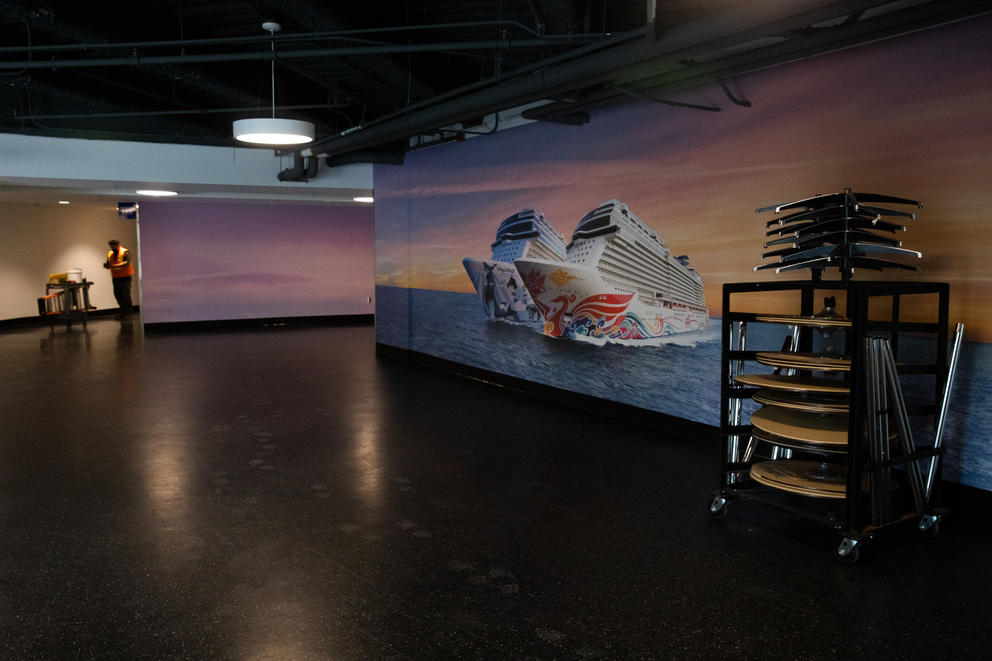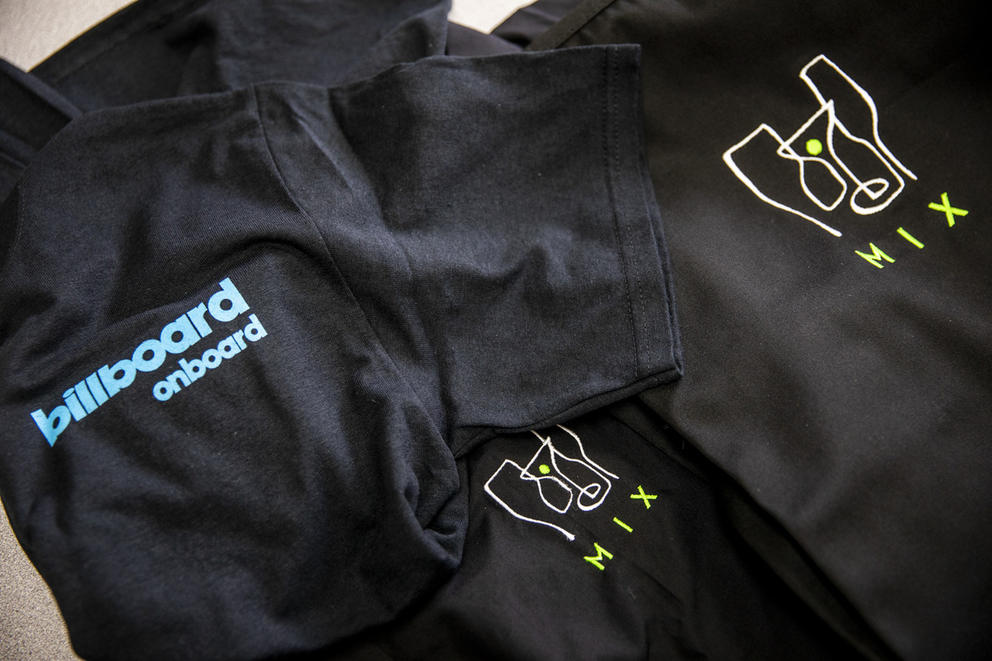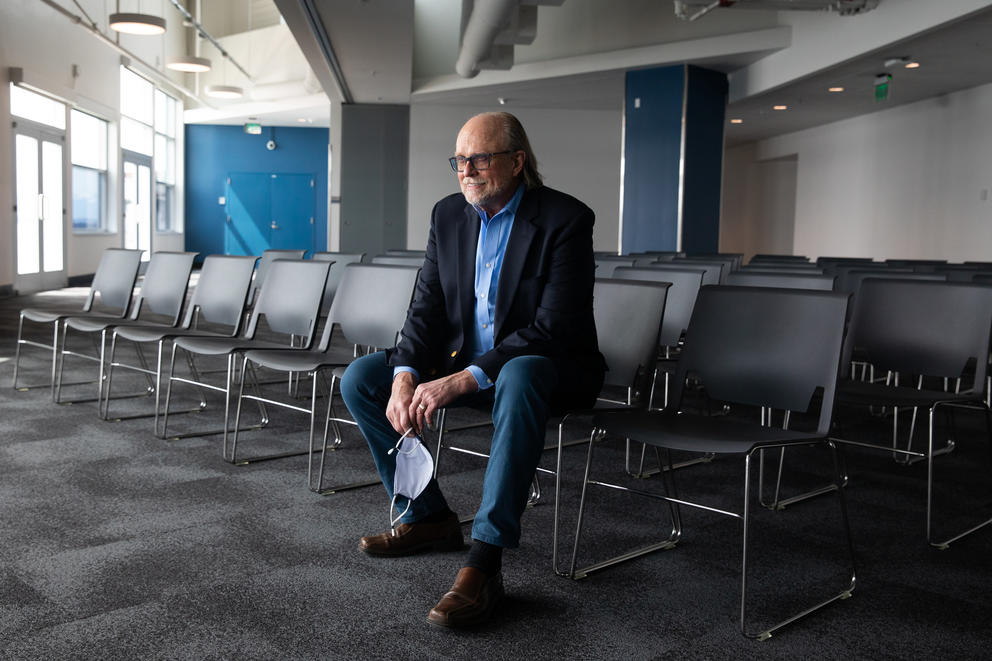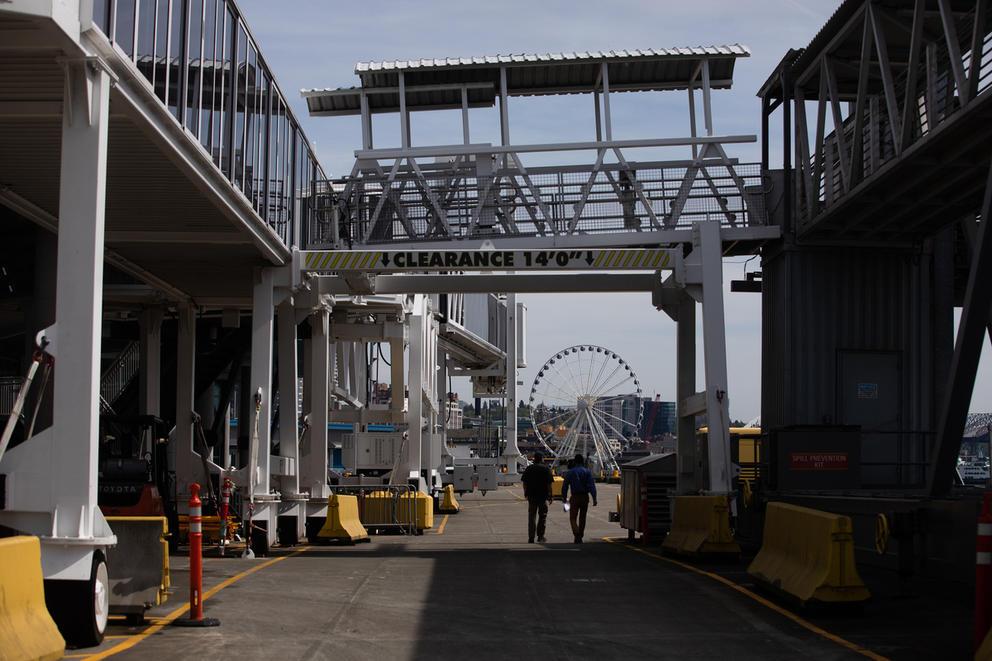No ships struck by illness ended up in Seattle. Indeed, no cruise ships sailed into local waters in 2020, as the Alaska cruise season was canceled by a No Sail Order from the Centers for Disease Control and Prevention. But in late April 2021, McLaughlin found himself back in an otherwise dormant facility as Congress prepared to rejuvenate the Seattle-to-Alaska cruise business.
“There’s a sense of excitement,” he said. “This door is partly opening up.”
The door opened fully on May 24, when President Joe Biden signed the bipartisan Alaska Tourism Restoration Act, which provides a temporary exemption for cruise ships to sail from Washington to Alaska without making a stop in Canada, as required in an 1886 law.
On the heels of the announcement, five cruise lines announced sailings from Seattle beginning in late July following new CDC protocols that allow cruises to depart from U.S. ports if nearly all passengers and crew are fully vaccinated.
When those cruise ships sail into Elliott Bay this summer for the first time in 20 months, they are expected to bring with them the resumption of significant economic activity that fans out across Western Washington. But their return will also come before negotiations are completed on updates to a voluntary environmental agreement that governs how those ships behave in Washington waters, setting up a clash between the return of sorely missed tourism dollars and the big ships’ questionable environmental record.
Vancouver’s misfortune, Seattle’s gain
Seattle owes its cruise business to the maritime equivalent of a full parking lot. For years, Vancouver, British Columbia, was the preferred jumping off point for Alaska-bound cruises. When our northerly neighbor couldn’t provide weekend dock space for a cruise line operator in the early 1990s, Seattle took the ship in a pinch.
Seizing on the opportunity, the Port of Seattle constructed a dedicated facility with the Bell Street Cruise Terminal, which opened in 2000. “We built it before we knew we had a customer,” said Stephanie Jones Stebbins, managing director for maritime operations at the Port of Seattle. The risky investment paid off, as the popularity of Alaska cruises grew and Seattle’s capacity kept pace, aided by cheaper airfare into Seattle than Vancouver for most U.S. travelers. As cruise ships grew larger, a quirk of infrastructure sealed the deal: The Lion’s Gate Bridge that guards Vancouver’s harbor became an obstacle to newer vessels, one they don’t face on the unobstructed route into Elliott Bay.
The port expanded Bell Street twice and opened the Smith Cove Cruise Terminal at Pier 91 in 2009. It also introduced visitor-friendly features like Port Valet, where airport-bound passengers can check their suitcase from their cabin straight to their final destination, freeing them to spend their return day out and about in Seattle before heading home. In 2019, Seattle won “Best North American Homeport” from online guide Cruise Critic.
“Now it’s become a significant part of our travel and tourism economy,” Jones Stebbins boasted. Heading into the canceled 2020 season, the port expected over 1.3 million passengers boarding 225 different sailings from seven major cruise lines. The port estimates that each ship call translates to $4.2 million in economic activity and that the industry supports some 5,500 jobs in Washington.
The economic tentacles start at the docks, from unionized longshoremen moving cargo and provisions to cleaning crews that race to spruce up the ship on turnover days. But they snake out far from the water, as Charlie’s Produce trucks line up bringing in pallets of local fruits and veggies, dairies as far away as Whatcom County churn butter and ice cream, and breweries and wineries across the state bottle up libations for these floating hotels. Landside hotels, too, relish the cruise visitors who frequently arrive a few days early or stay a few days later and visit Seattle museums and restaurants or take a day trip to the Woodinville wineries.
Four miles south of the dockside hustle and bustle, Alan Sidel presides over a 75-year-old family embroidery business, Don’s Group Attire. In early May, he shipped 30 boxes of uniforms to Holland America that had been sitting in his company’s Georgetown workshop since last year.
“We call it an exhale from holding our breath,” said Sidel of the outgoing shipment, speaking over the whirr of needles tapping away like woodpeckers. Don’s first began supplying Holland America in 1993. It was the company’s biggest account at the time, although today cruise lines account for only 5% of its business of embroidering everything from King County Metro driver uniforms to the harnesses for Crystal Mountain’s avalanche rescue dogs.
The constellation of small businesses in Western Washington that cut off a slice of the cruise ship pie is not incidental. The port hosts matchmaking events to introduce cruise operators to area businesses that can provision ships or provide local tours.
“It’s a huge economic impact and it’s not by accident,” said Jones Stebbins.
Cruising for carbon
Climate activist Elizabeth Burton can’t see the cruise ships sailing in and out of Elliott Bay from her Phinney Ridge apartment. Indeed, for most residents of King County who lack waterfront views, the ships are largely out of sight and out of mind. For Burton, who runs a math tutoring business and volunteers with a local coalition called Seattle Cruise Control, the industry’s relative anonymity is precisely the problem.
“Most people in King County have no idea how massive Seattle’s cruise business is,” she said. “They don’t realize that almost half a million people flew here every year to get on these gigantic ships.”
Burton didn’t pay cruise ships much attention until she took the Alaska Marine Highway in 2017. The state-run ferry stopped in Skagway on a day when four cruise ships were in port on a journey that started in Seattle. As thousands of people thronged the sidewalks of a city with a year-round population of 1,000, she left appalled.
“In addition to ruining the places they’re visiting, they’re also ruining the climate,” she said.
Burton’s experience led her to look more closely at the Port of Seattle upon her return. By her calculation, the port is not holding up its end of the bargain to help King County meet its climate goals. “I’ve been studying the port and seeing their greenhouse gas emissions are going in the wrong direction,” she said. “The climate impact of the Seattle-Alaska cruise industry is enormous — almost one-third as big as the annual climate impact of all of Seattle.”
Overall carbon emissions, as tracked by the Puget Sound Emissions Inventory, have been dropping since 2005, but the port’s carbon emissions increased by 7.6% in 2018, the last year for which data is available. The port has pledged to go carbon neutral by 2050. Cruise ships run on electric shore power when docked at Pier 91 and the port is in the design phase to extend shore power to Pier 66 by 2023.
The port says maritime emissions from both cruise and grain cargo ships decreased 17% from 2005 to 2016. Port-wide emissions that include ships and planes plus every support vehicle associated with the port and its cargo decreased 10% between 2005 and 2016.
When the pandemic forced cruise ships worldwide to stay put, Burton was elated. “We think the world is better off,” she said. “The fewer cruise ships, the better.”
That attitude is shared by like-minded activists in other cruise ports. Seattle Cruise Control is one node in an international alliance called the Global Cruise Action Network, which pushes against a return to business as usual as the cruise industry comes back to life. One of its founders is based in Juneau, Alaska, and recently launched a ballot initiative that would ban cruise ships from staying overnight or docking on Saturdays and phase in a restriction on the ocean’s largest ships.
Last year, Key West voters approved a measure that would limit the daily number of cruise ship tourists, although the Florida Legislature preempted the measure in a proposal that awaits the governor’s signature. In March, the Italian government banned cruise ships from Venice’s central lagoon.
Scrubbed clean
Even if some anti-cruise activists wished for the pandemic pause to become permanent, the temporary hiatus did not lead to the mothballing of the global fleet of cruise ships. Travel industry analysts observe strong demand for cruises, with Alaska at the top of the list of destinations that travelers would like to visit on a cruise as early as this year. That expected return is creating newfound pressure to strengthen Washington state’s environmental regulations.
Since 2004, the Northwest and Canada branch of the Cruise Line International Association, the industry’s global trade group, has operated in Washington waters under a voluntary memorandum of understanding with the Port of Seattle and the state Department of Ecology. The main tenet of that agreement is a ban on dumping wastewater in Puget Sound unless the ship has a so-called advanced wastewater treatment system.
The memorandum is updated every three years, during which time the public can propose amendments. Last year, local environmental groups submitted two amendments, one to ban sewage discharges entirely in Puget Sound and another to ban wastewater discharges from exhaust gas cleaning systems, known as “scrubber” systems. Ship engines generate exhaust and these systems capture pollutants like sulphur oxides and nitrogen oxides in order to comply with U.S. and Canadian marine emissions laws.
“Scrubbers are effectively an emissions cheat system,” said Kendra Ulrich, who directs the shipping campaign at Bellingham-based environmental advocacy organization Stand.Earth. “It allows these vessels to burn heavy fuel oil, one of the dirtiest fossil fuels, which is an oil refinery waste product. On land it would have to be disposed of as hazardous waste, which means cruise ships are glorified hazardous waste incinerators for the world’s oil refineries.”
According to Department of Ecology reports, Holland America Line’s Eurodam discharged scrubber wastewater in the Olympic Coast National Marine Sanctuary on Sept. 21, 2018, when an emergency backup generator started. Two other discharges occurred in 2019, including one on July 28, when the Holland America Line’s Oosterdam had difficulty connecting to shore power and fired up its scrubber system, which blew soot into Elliott Bay leaving an 80-by-30-foot gray sheen.
None of these incidents was considered violations of the memorandum of understanding, and they did not result in a Department of Ecology penalty, according to compliance supervisor Amy Jankowiak. “These incidents were reported promptly and addressed quickly,” she said.
The three parties to the memorandum of understanding continue to negotiate. Evan Dobrowski, Department of Ecology stormwater and maritime compliance specialist, does not believe there will be agreement on the proposed amendments by July, when cruise ships return to local waters. However, the port suggested that the voluntary agreement is likely to tighten.
“This is a ratchet that only goes one way,” said Jones Stebbins.
Environmental groups that have been watchdogs on cruise lines see an industry that drags its feet rather than leads, especially on the issues of cleaner fuels and lower emissions. Ulrich of Stand.Earth would like to see the industry switch immediately to lower-emissions fuels like marine gas oil and invest significantly in the development of nonfossil fuel propulsion technologies like hydrogen fuel cells, battery-powered storage and wind-assisted propulsion.
While Jones Stebbins describes the port’s current goal as “focused on a successful return to operations at our existing facilities,” she also insists that the public agency has not lost sight of longer-term goals for the industry it invites into Elliott Bay every May through September.
“We just outlined a strategy for phasing out our own carbon emissions and in a post-pandemic world we expect our partners will be standing there with us,” she said. “They are global businesses and we are just one port, but we will continue to push.”

